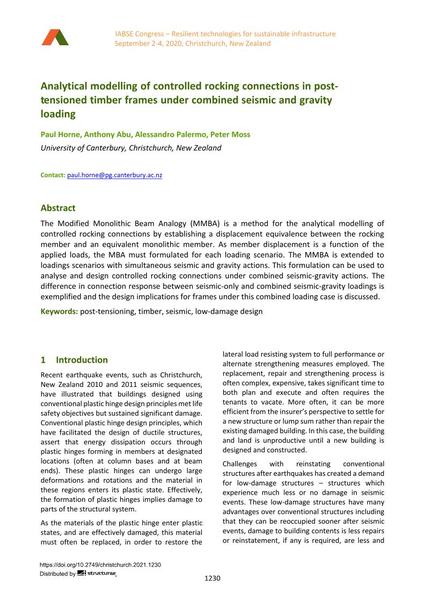Analytical modelling of controlled rocking connections in post- tensioned timber frames under combined seismic and gravity loading

|
|
|||||||||||
Détails bibliographiques
| Auteur(s): |
Paul Horne
(University of Canterbury, Christchurch, New Zealand)
Anthony Abu (University of Canterbury, Christchurch, New Zealand) Alessandro Palermo (University of Canterbury, Christchurch, New Zealand) Peter Moss (University of Canterbury, Christchurch, New Zealand) |
||||
|---|---|---|---|---|---|
| Médium: | papier de conférence | ||||
| Langue(s): | anglais | ||||
| Conférence: | IABSE Congress: Resilient technologies for sustainable infrastructure, Christchurch, New Zealand, 3-5 February 2021 | ||||
| Publié dans: | IABSE Congress Christchurch 2020 | ||||
|
|||||
| Page(s): | 1230-1238 | ||||
| Nombre total de pages (du PDF): | 9 | ||||
| DOI: | 10.2749/christchurch.2021.1230 | ||||
| Abstrait: |
The Modified Monolithic Beam Analogy (MMBA) is a method for the analytical modelling of controlled rocking connections by establishing a displacement equivalence between the rocking member and an equivalent monolithic member. As member displacement is a function of the applied loads, the MBA must formulated for each loading scenario. The MMBA is extended to loadings scenarios with simultaneous seismic and gravity actions. This formulation can be used to analyse and design controlled rocking connections under combined seismic-gravity actions. The difference in connection response between seismic-only and combined seismic-gravity loadings is exemplified and the design implications for frames under this combined loading case is discussed. |
||||
